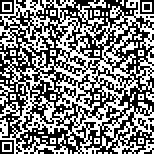|
| 引用本文: | 刘 博,王清印,李 健,刘 萍,何玉英.中国对虾(Fenneropenaeus chinensis)“黄海1号”部分生长相关性状的QTL 定位分析.海洋与湖沼,2010,41(3):352-358. |
| |
|
| |
|
|
| 本文已被:浏览 3182次 下载 2767次 |

码上扫一扫! |
|
|
| 中国对虾(Fenneropenaeus chinensis)“黄海1号”部分生长相关性状的QTL 定位分析 |
|
刘 博1, 王清印2, 李 健2, 刘 萍2, 何玉英2
|
|
1.中国海洋大学海洋生命学院,中国水产科学研究院黄海水产研究所;2.中国水产科学研究院黄海水产研究所
|
|
| 摘要: |
| 在已构建好的中国对虾“黄海1 号”F2 代遗传连锁图谱上, 使用WinQTLcart 2.5 软件进行复合区间作图定位, 通过置换实验(1000 次重复)确定连锁群显著性水平阈值。在对体重、各腹节长和尾节长8 个性状的QTL 定位分析中, 共检测到29 个QTL, 其中与体重相关的QTL (BW1.2)、腹节1 长相关的QTL (A1L2.1、A1L9.2、A1L17.3、A1L26.4)、腹节3 长相关的QTL (A3L16.1)、腹节4 长相关的QTL (A4L26.1)、腹节6 长相关的QTL (A6L20.3)及尾节长相关的QTL (T3L17.3)等9 个达到连锁群显著水平(P=0.05), 对性状的贡献率为11.14%—23.60%, 其中位于第16 连锁群(LG16)上的与腹节3 长相关的QTL (A3L16.1)的贡献率为23.60%, 达到了极显著水平(P<0.001), 但它们的加性方向并不一样, 除了与腹节1 长相关的QTL (A1L2.1)和与腹节6 长相关的QTL (A6L20.3)方向为负以外, 其余7 个主效QTL 均呈正方向。本研究同时发现了与QTL 紧密连锁的分子标记, 如位于第1 连锁群(LG1)上的分子标记D9f446、位于第17 连锁群(LG17)上的M10f246、位于第26 连锁群(LG26)上的SX18 和位于第30 连锁群(LG30)上的B2f260 等, 这些与QTL 距离仅为0.01cM(厘摩)的分子标记, 将为QTL 精细定位提供参考。
|
| 关键词: 中国对虾, 遗传连锁图谱, 体重, 腹节长, 尾节长, QTL |
| DOI:10.11693/hyhz201003009009 |
| 分类号: |
| 基金项目:国家科技支撑计划“高产优质虾、贝、藻类新品种选育”, 2006BAD01A13 号; 公益性农业行业科研专项“对虾养殖管理信息系统研究与建立”, nyhyzx07-042 号; 国家虾产业技术体系, nycytx-46 号; 国家自然科学基金“中国对虾抗逆家系的选育及其相关遗传标记的筛选与克隆”, 40706052 号 |
| 附件 |
|
| THE ANALYSIS OF MAPPING QTLS ASSOCIATED WITH SEVERAL GROWTH-RELATED TRAITS IN CHINESE SHRIMP FENNERO PENAEUS CHINENSIS |
|
LIU Bo1,2, WANG Qing-Yin2, LI Jian2, LIU Ping2, HE Yu-Ying2
|
|
1.College of Life Science, Ocean University of China;2.Yellow Sea Fisheries Research Institute,Chinese Academy of Fishery Sciences
|
| Abstract: |
| The Chinese shrimp Penaeus (Fenneropaeneus) chinensis is an important species in marine fishery and aquaculture in China. A female Chinese shrimp F. chinensis was captured from the west coast of the Korean peninsula and mated with a “Yellow Sea No.1” male to produce the F1. F2 families with a sum of 100 individuals from the brother-sister cross among the F1 families. In the present study, a genetic linkage map of the Chinese shrimp was constructed, based on 354 markers including 300 amplified fragment length polymorphism (AFLP) markers, 42 microsatellite (SSR) markers and 12 randomly amplified polymorphic (RAPD) markers. Forty-seven linkage groups (LGs) were found. The total map length was 4580.5cM, with an average spacing of 11.3cM, covering 75.8% of the estimated genome size. Based on the constructed linkage map using the Chinese shrimp F2 population, marker regression and complexity interval mapping were analyzed with the WinQTLcart 2.5 software. A linkage group-wide permutation test (1000 replicates) determined the significance of the maximum LOD value over the various intervals analyzed for each linkage group. On the study of QTL mapping among body weight (BW), abdominal segment length (AL) and telson length (TL), a total of 29 QTLs were located, nine significant QTLs (BW1.2, A1L2.1, A1L9.2, A1L17.3, A1L26.4, A3L16.1, A4L26.1 and T3L17.3) were at the 5% linkage group-wide level for these linkage groups, and A3L16.1 for abdominal segment length was at 1% level. The variances explained by these QTLs ranged from 11.14% to 23.60%; and their additive effects were not identical. Except A1L2.1 and A6L20.3, the other seven major QTLs were positive. In addition, some molecular markers (D9f446, SX18, M10f24 and B2f260) were tightly linked to their corresponding traits, which could be used for fine mapping of these QTLs.
|
| Key words: Penaeus (Fenneropenaeus) chinensis, Genetic linkage map, Body weight, Abdominal segment length, Telson length, QTL |
|
|
|
|
|
